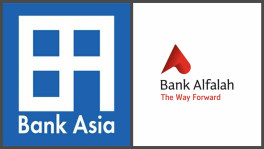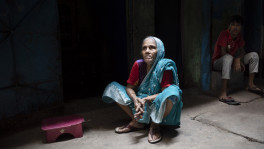Inequality and intergenerational mobility in Bangladesh
A meritocratic system of employment coupled with support for disadvantaged groups will promote intergenerational mobility in the long run

Intergenerational mobility (IGM), that is, economic mobility across generations, is a major indicator of socioeconomic development. Most parents would like to see that their children achieve a higher standard of living than they have had themselves.
High IGM can help reduce income inequality and poverty and promote sustained and inclusive economic growth. Lack of IGM, in contrast, implies lack of equality of opportunity which can undermine trust in social, political, legal institutions and norms.
The combination of income inequality and intergenerational mobility varies across countries. Low inequality may coexist with high intergenerational mobility, as in Nordic countries. High inequality may be associated with low intergenerational mobility. The United States, South Africa, Brazil, and possibly Bangladesh are the exemplars of this combination.
Some continental countries, such as France and Germany, show low mobility and low inequality. In recent decades, income inequality has increased in China which has been associated with high mobility. In reality, there are wide variations along the mobility and inequality spectrums.
Absolute upward IGM measures the extent to which the levels of education or income of the current generation are higher than those of their parents. Higher absolute upward mobility is essential to shared economic growth and reductions of poverty.
Relative mobility measures the extent to which an individual's position on the economic ladder is independent of the socio-economic position of his/her parents. A higher relative IGM across generations is associated with a lower inequality of opportunity. Both absolute and relative IGM are complementary and are essential for sustained economic growth.
For several reasons, the relationship between intergenerational mobility and inequality is important for Bangladesh. First, during the last three decades, the performance of Bangladesh has been impressive in economic growth, level of per capita GDP, reduction of extreme poverty, and expansion of education, especially for girls.
A relevant question is: Is the impressive performance on the above indicators associated with improvements in absolute and relative mobility in education and income?
Second, in recent years, income inequality has increased significantly in Bangladesh. What is the likely effect of increased inequality on relative intergenerational mobility in Bangladesh?
Finally, which government policies in this country are likely to be effective in promoting intergenerational mobility?
Parental income and education influence incomes of children in the next generation through various channels: (1) parents with high income and education levels can afford to provide high levels of education for their children; (2) parents with high income and education can help their children acquire non-cognitive skills, norms, and values which are valued in labour markets; and (3) parental characteristics other than education which directly and indirectly increase adult earnings of children in the future: parental social, political connections and networks, parental access to information, services, and jobs, and neighbourhoods where parents choose to live.
Inequality in wealth and income is associated with inequalities in health, parental financial and non-financial resources, and education.
Various forms of inequality lead to inequality of opportunities and create a vicious cycle: higher inequality stunts the development of not only human capital but also human potential restricting upward mobility which in turn perpetuates inequality.
The Global Database on Intergenerational Mobility, produced by the World Bank indicates the following:
Absolute intergenerational mobility in education in Bangladesh is impressive especially for girls: 65 percent of daughters in Bangladesh surpassed the education level of their fathers, outperforming India and Pakistan.
Relative intergenerational mobility is higher in Bangladesh compared to India and Pakistan but lower compared to Sri Lanka, China, and Vietnam.
Overall, the data suggest that the vast majority of children from the bottom half are stuck in quartiles 1 and 2 while those in the highest quartile face low risks of falling down the education ladder.
This is consistent with the existence of "sticky floors" and "sticky ceilings" (OECD, 2018). Sticky floors restrict movement of disadvantaged groups to higher rungs of the socio-economic ladder, while sticky ceilings protect richer groups from falling down the ladder.
Covid-19, most likely, has worsened income inequality and intergenerational mobility. For thousands of households, the pandemic has broken the ladder of upward mobility and has pushed them toward downward mobility through income and job losses.
Policy recommendations
Intergenerational mobility in education, income, and other metrics of well-being are determined by many factors: characteristics of individuals and families, community and neighbourhoods, access to and quality of educational institutions, formal and informal institutions governing labour markets, and government policies.
In a market-oriented economy, there are built-in forces that increase inequality of opportunity and stifle intergenerational mobility. Government policies can act as countervailing forces to offset negative effects of income inequality on intergenerational mobility.
Bangladesh has made significant progress in absolute intergenerational mobility in education, especially for girls. However, relative mobility is still low in Bangladesh, compared to rapidly growing countries such as China and Vietnam. This suggests that not only "glass-ceilings," but also "class-ceilings" remain major barriers for upward mobility of girls in Bangladesh.
Access to quality education at all levels can be a powerful driver to promote relative mobility in education and income. Growing privatisation of education in Bangladesh, however, poses a significant barrier to relative intergenerational mobility.
Furthermore, in Bangladesh the quality of schools varies substantially within and between urban and rural areas. Government policies must be re-designed to allocate more resources to schools in relatively poor and remote areas.
Investment in early development of cognitive and social skills in children especially from disadvantaged families yield high social returns.
According to the Multiple Indicator Cluster Survey 2019 (Bangladesh Bureau of Statistics and UNICEF), only 18.9 percent of children aged 36 to 59 months attended early childhood education programs.
The same survey documents substantial inequalities in several health indicators across wealth groups. Bangladesh should allocate more resources toward early childhood education and care especially for the children born in poorest families.
Bangladesh has achieved remarkable progress in enrolment rates at the primary and secondary levels. However, poverty and social problems such as child marriage remain major causes of high dropout rates at the secondary level.
According to Mics, Unicef, only 4.1 percent of the female population from the poorest quintile completed higher secondary school, compared to 37 percent for the richest quintile. Government policies in concert with non-governmental organisations, local governments, and community organisations should play a more active role in preventing dropouts.
Intergenerational mobility in education is not fully translated into intergenerational mobility in income in Bangladesh. This is reflected in high unemployment rates among the educated youth, which is caused by imperfections in the capital and labour markets. A meritocratic system of employment coupled with support for disadvantaged groups will promote intergenerational mobility in the long run.
Given the fact that poverty levels vary widely across towns and districts, intergenerational mobility is expected to vary across regions in Bangladesh. For instance, according to the Bangladesh Bureau of Statistics (2019), the poverty rate (upper poverty line) varies from 10 percent in Dhaka to 70.8 percent in Kurigram district.
A shift toward a more decentralised economy and a more effective role of local governments in economic development may reduce intergenerational mobility gaps in different regions of Bangladesh.
Dr Sadequl Islam is professor & chair of economics, Laurentian University, Ontario, Canada


 Keep updated, follow The Business Standard's Google news channel
Keep updated, follow The Business Standard's Google news channel
















